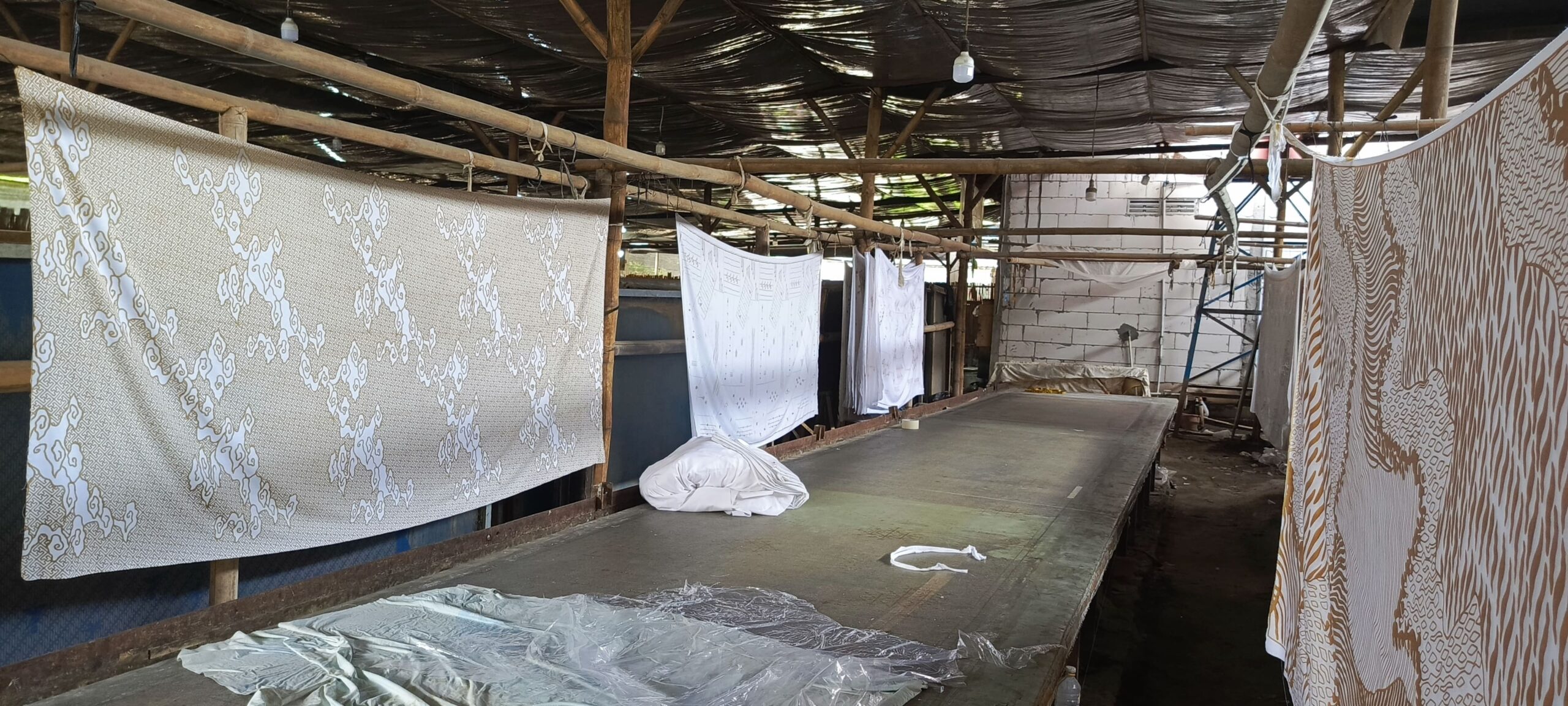Batik is a way to make designs on fabric using wax. First, the batik wax is put on the fabric with a brush, a tjanting tool, or a stamp. This stops the dye from going to certain parts. Then, the fabric is dyed. After that, the wax is taken off.
In Indonesia, there’s a lot of popular wax for making batik. In this article, Ajeg Makmur will talk about three types of batik wax that are really popular in Indonesia.
Klowong Wax
Klowong Batik Candle has a specific function, which is to cover designs on fabric. These designs are special, made using a technique called rengreng and nerusi. The candle covers these designs on both sides of the fabric. This type of candle is typically used for motifs like isen-isen, which are decorations and ornaments on batik cloth, such as cecek and sawut.
These candles have unique characteristics: they melt easily when heated and quickly solidify if the heat and stove temperature aren’t carefully controlled. They can create sharp motif lines and have strong adhesion, similar to regular wax. This candle is similar to wax, but it can’t withstand alkaline solutions. It can be easily washed away when diluted, and when it melts, it disappears completely without leaving any marks.
Tembokan Wax
Tembokan Batik candles act like a barrier wall when tracing designs on fabric. They’re used to perfectly block areas of cloth with motifs. These candles have specific traits: when heated, they become quite liquid and can quickly solidify if stability isn’t maintained.
They easily adhere to fabric, creating a strong bond. They’re resistant to alkaline solutions and are very hard to remove when soaked in water, which is beneficial as they don’t leave marks once the process is complete.
Biron Batik Wax
Biron batik wax (malam) is a special type of wax used in the mbironi process, which involves covering specific areas of dyed motifs. This process is crucial for ensuring the quality of batik products. However, many batik items made with natural dyes suffer from poor quality due to dye seepage caused by low-quality biron wax. This study aims to determine the optimal composition of biron wax for producing high-quality natural dye batik. The research involved random experiments using different compositions of raw materials for biron wax, including paraffin and used wax.
The biron wax prototypes were then applied to cotton and silk fabrics, and various tests were conducted, including melting point tests, evaluation of motif sharpness and color, and tests to ensure the wax could be cleanly removed from the fabric. The findings revealed that the best quality biron wax for cotton fabrics consists of a formula with 1 part kote, 5 parts paraffin, and 4 parts batik wax former. For silk fabrics, the optimal composition is a formula with 2 parts gondorukem, 5 parts paraffin, 14 parts batik wax, and 1 part kendal.
That’s the complete explanation about three most popular types of Batik wax in Indonesia. Ajeg Makmur Batik offers many original Indonesian Batik motifs with the best quality results!



